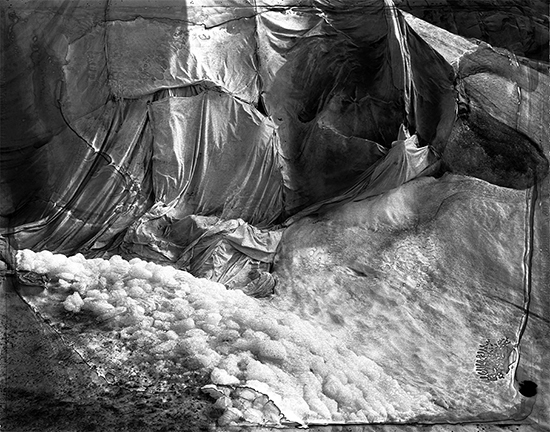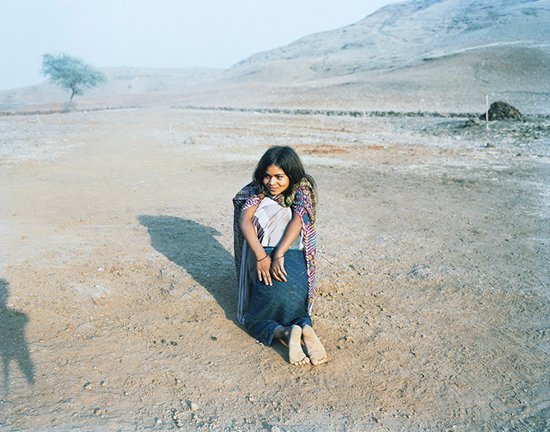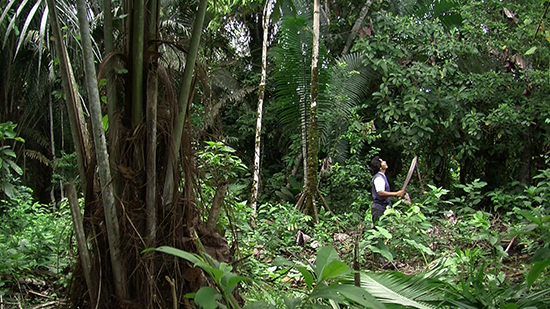| SIMON DENISON IMAGE & TEXT |
| PREVIOUS | NEXT |
AHEAD STILL LIES OUR FUTURE Format Festival 2017: QUAD Gallery, Derby
The main show at this year’s Format photography festival in Derby, Ahead Still Lies Our Future, addressed the threat of global ecological catastrophe from a position of hope. Works had been gathered from image-makers around the world which ‘signal a new era beyond the capitalocene,’ wrote co-curator Hester Keijser in her gallery statement. ‘What is needed at this junction … [are] images that ground vision anew’. It was a commendable and refreshing statement of intent at a time when most commentary on global affairs seems relentlessly scathing and pessimistic. The show itself, however, took a while to adjust to in light of this intention. This may be partly because the artworks represented an extremely varied and disparate mix of style, medium and content: documentary, fictional and art-video type films, a web-based research archive, a virtual reality experience, photodigital fantasy images and photographs in both realist and metaphorical modes, addressing diverse subject matter. Lacking a coherent pattern of messaging, signs of hope were present but had to be patiently looked for. Swiss film-maker Ursula Biemann’s 38-min documentary Forest Law, for example, refers to a 2012 case in Ecuador in which the Amazonian forest was framed as a legal entity and successfully brought to court to plead the ‘rights of nature’ against commercial interests. Lisa Barnard’s impressively wide-ranging inquiry into the globalised culture of gold, The Canary and the Hammer (www.thegolddepository.com), notes – amid a mass of other material – scientific research into cleaning up metal-contaminated land using plants, and into stimulating the luminescent properties of chlorophyll with gold to allow trees to be turned, if anyone should wish to do so, into street-lamps. Signs of hope perhaps; although somewhat modest ones, insecure and disjointed. For most of the rest of the work on display, it seems hard to believe that optimism formed any part of the intended meaning, let alone of the viewer’s experience. Kenyan film-maker Wanuri Kahiu’s 20-min short Pumzi is set in a future dystopia following ecological wipe-out. A pocket of nature has survived beyond the desert, kept secret by the authorities in charge of what remains of human society. The film’s heroine tries to reach it, but dies in the attempt. Afghan artist Lida Abdul’s dual-screen video What We Have Overlooked presents an anxious-looking man in military dress holding a flag, slipping underwater in the middle of a lake. Subtitles express exhaustion and despair – ‘We do not want to become legendary because we’ll disappear … We’re tired of remembering so much …’ – evoking a sense of individuals aware they are being sacrificed to national ideology but unable to resist. Ester Vonplon’s series, Gletscherfahrt, depicts huge sheets that have been laid roughly across parts of Swiss glaciers during summer months in an attempt to arrest the melting of the ice, indicating a heroic but surely hopeless human attempt to halt the forces of nature, like trying to push back a thunderstorm with one’s bare hands. The sheets appear not like screens but shrouds. So there may have been a little bit of mismatch between curatorial ambition and the works on show, but the curators nonetheless assembled some powerful work judged on its own terms. Vonplon’s dark, black-and-white, semi-abstract close-ups are not only remarkable for the acts they document, but they also have a brooding, immersive and curiously mid-20th century photographic quality that is reminiscent of the work of Minor White. Yet whereas White’s photographs were explicitly mystical expressions of wonder at natural phenomena infused by the divine, Vonplon’s altogether darker, indeed terrifying images of tattered edges, gaping seams and snowmelt stains suggest a dying world which God has abandoned. Indian photographer Sohrab Hura’s work, The Song of Sparrows in a Hundred Days of Summer, is equally strong but has an entirely different quality: it charms and delights. The most straightforwardly documentary of all the works here, it depicts life in the village of Savariyapani in Madhya Pradesh, one of India’s hottest regions, at the height of summer. People sit, sleep, stand and look; show affection to each other and to animals; children play. This sense of a close human community, dazed into minimal activity by heat, offers no kind of bulwark against climate change of course, yet is nonetheless touching and strangely reassuring. The pictures are muted, formally elegant, delicate in every sense and loveable. What, then, of Keijser and fellow curator Louise Clements’ ambition for photographic practices that ‘ground vision anew’ at a time when our very existence is threatened? Image makers have always been able to observe, report, interpret, protest and incite. There is still a role for that, and there were some examples of it here. Photographers, it should be said, have also always been very good at mourning for what has been lost, at contemplation and reverie, and at celebration of present wonders; but none of those ways of thinking are going to help much in the front line of the saving-the-planet war. What is being called for is inspiration and revelation. One cannot help but feel that the explicitly postmodern, intentionally obscure, make-of-this-whatever-you-will type of photography that is commonplace now in the art world will somehow not do. There were some examples of that, too, here. We need clarity: some clear sense of a path we can take that does not feel like a backwards step to pre-modern forms of existence; and new conceptualisations of wealth that will satisfy those in the world who do not regard themselves now as wealthy, as well as those who do. Inspirational but workable ideas will be rare: they might be found in any professional field, but they need to be sought out. Biemann’s approach perhaps seems the most useful one here: old-fashioned documentary, a nose for a story and nothing too mannered in the mode of representation. There is still work to be done. |
 |
|---|---|
 |
|
 |
|
| Images: Vonplon (top), Hura (middle), Biemann (bottom) | |